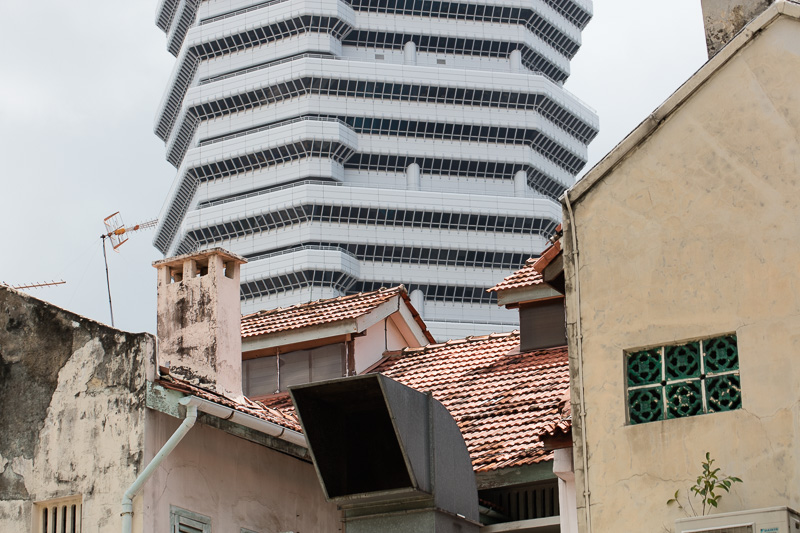When I hear the word “development” I feel skeptical. Phrases like “structural adjustments” aren’t far behind. I wonder, too, if it isn’t just a case of Western financial institutions trying to make non-Western places over in their own image. When I hear the word “development” in connection with words like “modern” and “modernism” my skepticism turns up a notch.
We might say to a friend: “See the modern-looking building.” But our observation is far from neutral. Modern is not a stylistic quirk or a design decision. It’s an expression of an ideology. It’s a way of being in the world. It assumes the primacy of science, the certainty of progress, the promise of a bright and shining future, the value of democracy, the inevitability of capitalism, the cachet of consumption. Even those of us who turn a critical eye to its assumptions can’t help but note that we ourselves are moderns. We were born into it. We have internalized its values. As a result, we catch ourselves speaking out of both sides of our mouths. We fret for the environment but drift into malls and buy things we know will end up buried in landfill. We point a finger at late capitalism’s unjust distribution of wealth yet run out to play our lottery numbers.
Like all large cities suckling at the teat of late capitalism, it looks like Singapore has thrown its official plan into the shredder. Large construction projects have sprung up everywhere. The demand for cheap foreign labour goes up and up even as local citizenship requirements become more stringent. There’s a whiff of payola in the air. Dirty money in need of laundering. I’m no forensic accountant, but when every mall has a Rolex store, I get the feeling something is strange with the local economy.
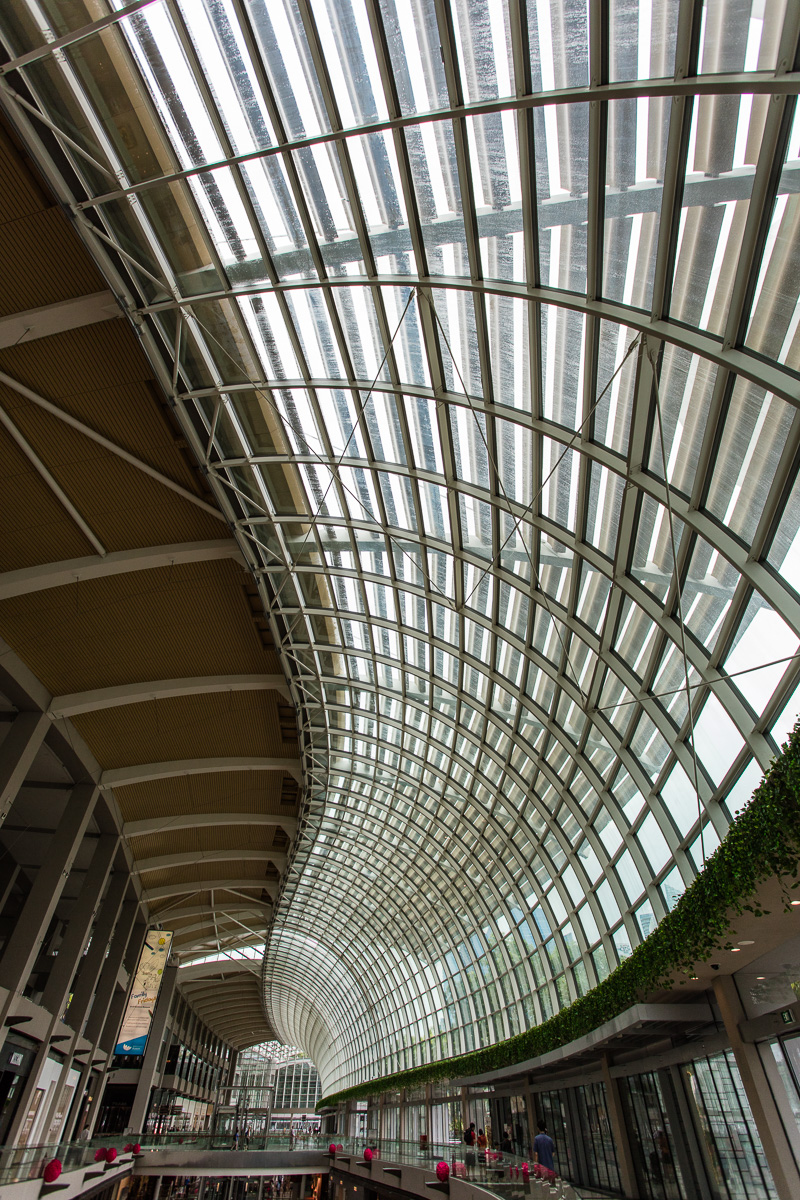
Take the Marina Bay Sands – hotel, world’s largest atrium casino, convention centre, museum, theatres, shopping mall, 7 celebrity chef restaurants, infinity pool, skating rink, indoor river with gondoliers. With an $8bn price tag, it’s touted as the world’s most expensive standalone casino property. It all seems a bit grandiose. More to the point, it all seems a bit beyond ordinary people. The scale of its buildings reinforces that feeling. This is a place better suited for giants.
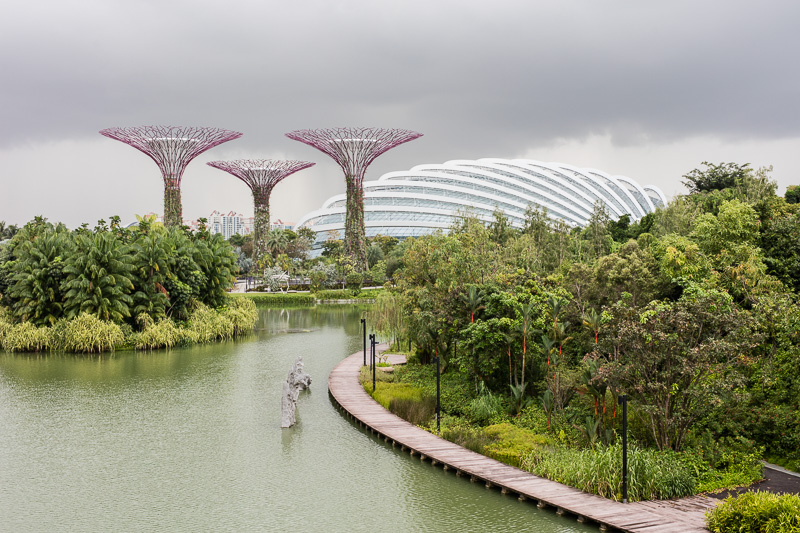
Within sight of Marina Bay Sands are the Gardens by the Bay which includes the conservatories. Shown above is the Flower Dome, the world’s largest columnless glasshouse. You get the impression that Singapore doesn’t mess around. It wants the biggest of this and the best of that.
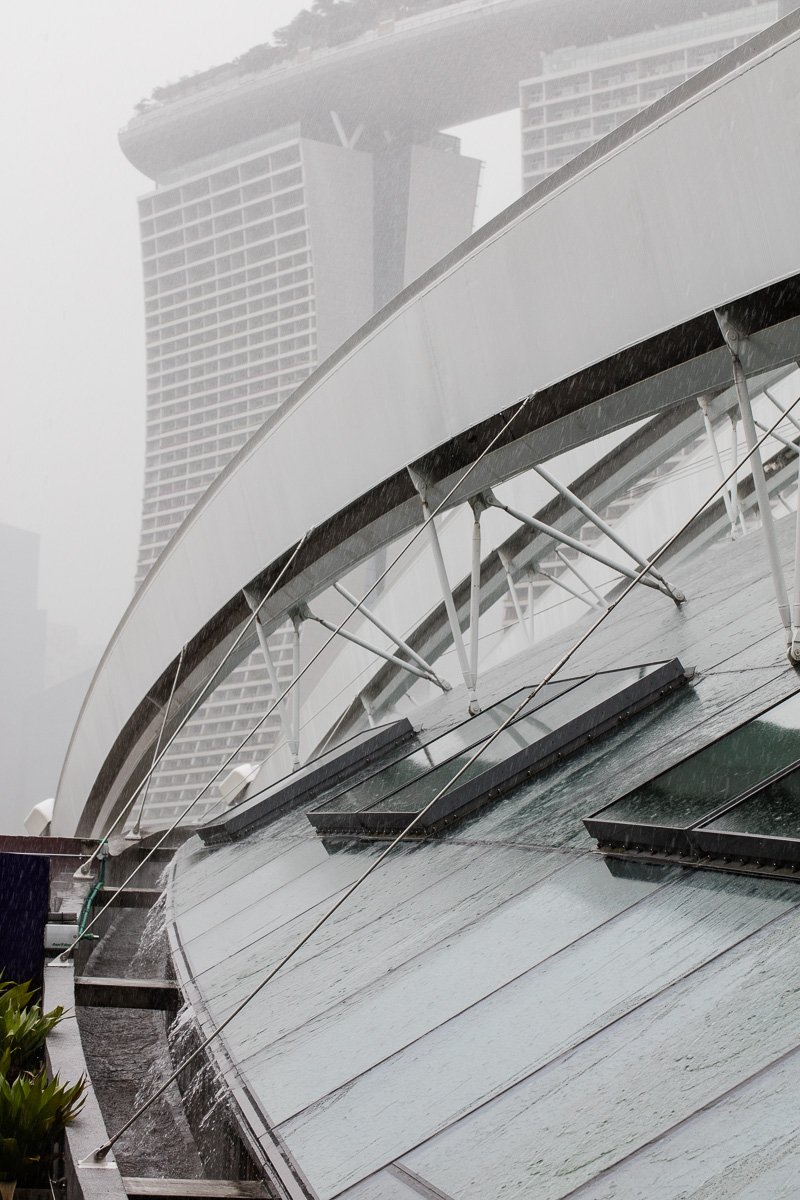
I’m fascinated by the municipal fetish for waterfront ferris wheels. London has the Eye. Hong Kong has its prosaically named Observation Wheel. Singapore has the Flyer. Toronto’s former mayor, the illustrious Rob Ford, wanted Toronto to have a giant ferris wheel, too, reasoning that we couldn’t be a “world class” city without one. The city dismissed his proposal as the whimsical product of a sad man-child’s immature brain. One wonders if the city would have reacted differently had the proposal come from Toronto’s current and sober mayor.
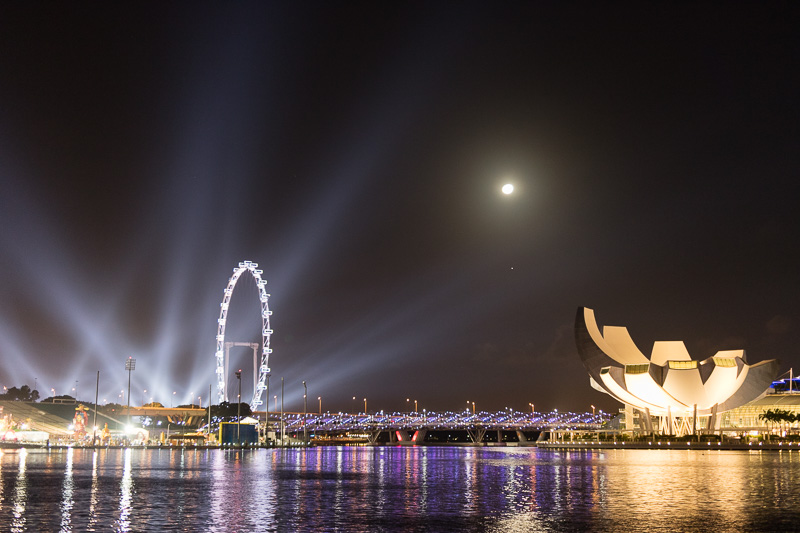
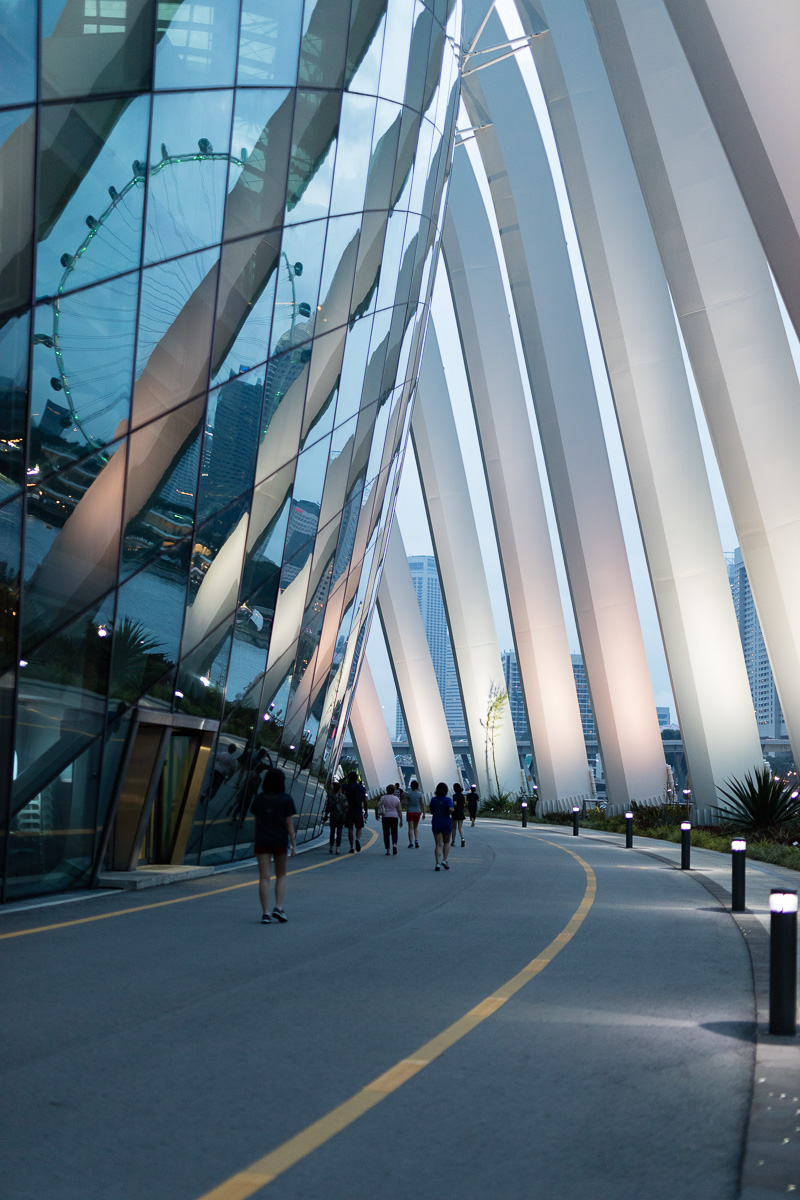
One of the problems with modern architecture – or modern anything for that matter – is that it plays to the future at the expense of the past. Old buildings are obsolete or inefficient. Historical concerns and cultural significance get in the way.
